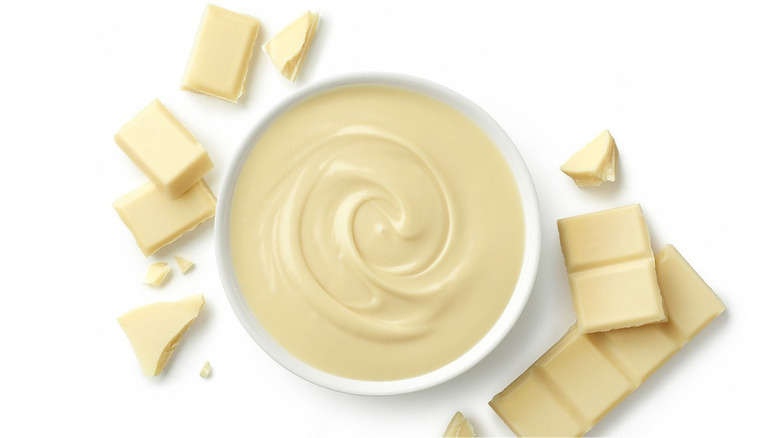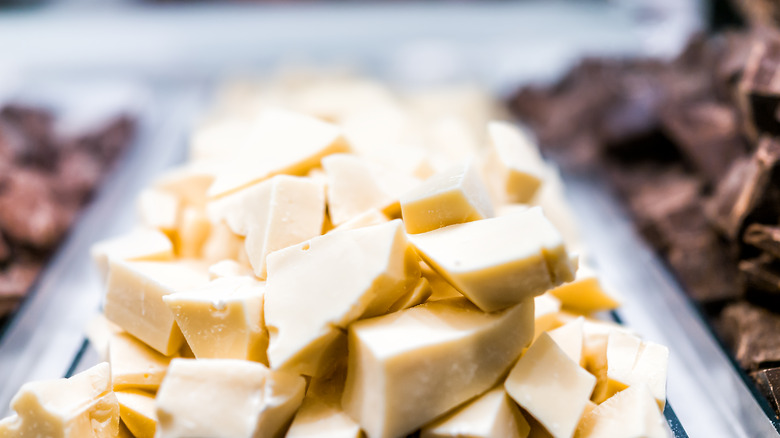Why White Chocolate Isn't Even Chocolate At All
Depending on what brand you're buying, white chocolate can either assault your taste buds with sickly sweetness or have a pleasant vanilla essence. While its flavor can be appealing and definitely makes for a decadent tray of homemade white chocolate fudge, it's missing some key ingredients that make chocolate, well, chocolate.
Creating chocolate is all about finding a balance between chemical reactions. When cacao pods are cracked open and their beans extracted, the fermentation process begins. Next, the beans must be roasted, and you have yourself a cocoa nib that becomes chocolate liquor when ground up. From the liquor, chocolatiers draw out the cocoa solids to infuse into their artisan chocolate, which is exactly what white chocolate lacks. Instead, white chocolate makes use of the other creamy ingredient extracted from the liquor — cocoa butter. Ever notice the handy percentage listed on fancy chocolate bars? These numbers express how much rich cocoa is packed into the bar, and the same goes for white chocolate, except the percentage measures its cocoa butter levels.
Due to the absence of chocolate solids in its production, the FDA once labeled white chocolate as "white confectionery coating", and was thus unworthy of the title of true chocolate. However, in 2002 they reversed that technicality altogether.
In America, it's only white chocolate if it contains 20% cocoa butter
These days it's all about the numbers when determining what's chocolate and what isn't. The U.S. FDA requires white chocolate to have a minimum of 20% cocoa butter, and 10% milk solids, and it can't have any flavors that taste similar to milk chocolate. If it doesn't meet those standards, it has to be legally marketed as something else. American chocolate companies like Hershey's don't always use enough cocoa butter in their white chocolate due to how costly it is, so we end up with imitations. You can easily tell when this is the case by looking at the ingredients and label wording. For instance, when Hershey's replaced cocoa butter with vegetable oil in its Cookies 'n' Creme white chocolate recipe, it ceased to be white chocolate.
Adding more cocoa butter to white chocolate leads to a creamier, silky-smooth texture that has a unique richness to it. The lower the percentage of this key ingredient in white chocolate, the more likely it is that fillers such as hydrogenated oils and heaps of sugar are added. The New York-based pastry chef, Jacques Torres, has stated his opinion in an interview with Mashed, "We call it white chocolate because the first ingredient in white chocolate is the cocoa butter, the fat coming from the cacao beans." To some, white chocolate may not technically be chocolate, but to others, it's just deliciously parallel enough to be.

